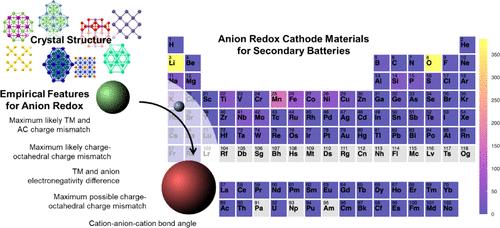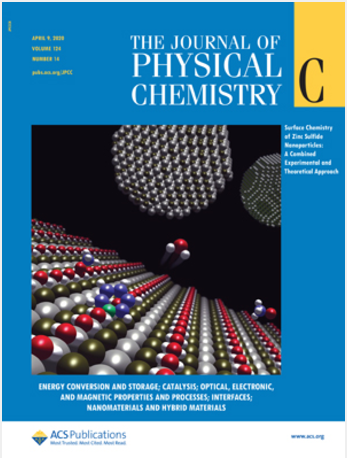Predicting Anion Redox in Secondary Battery Cathode Materials with a Data-Driven Model
IF 3.3
3区 化学
Q2 CHEMISTRY, PHYSICAL
引用次数: 0
Abstract
In this study, a new empirical model for predicting the likelihood that a material will exhibit anion redox under cation intercalation is developed with a machine learning approach, and many promising new materials are predicted by applying the model to thousands of candidates. This model is applied to a subset of the Inorganic Crystal Structure Database to determine trends in reported literature materials that can guide design and exploration of new materials that exhibit anion redox to obtain high energy storage capacities without the pitfalls, such as low cyclability, that plague known anion redox materials. Anion redox cathodes improve the energy density of current lithium and sodium secondary batteries owing to their ability to charge compensate mobile cation insertion/extraction through changing the oxidation state of the anion in addition to a transition-metal species. Although the true mechanism through which anion charge compensation occurs has not been fully elucidated, materials that exhibit this phenomenon have recently become the topic of intense interest given their potential to help improve the energy density of secondary batteries beyond current capabilities. Anion close-packed structures and high-valent transition metals are confirmed to be key attributes for enabling anion redox in these materials.

利用数据驱动模型预测二次电池阴极材料中的阴离子氧化还原作用
在本研究中,利用机器学习方法开发了一种新的经验模型,用于预测材料在阳离子插层作用下出现阴离子氧化还原的可能性,并通过将该模型应用于数千种候选材料,预测出了许多有前途的新材料。该模型应用于无机晶体结构数据库的一个子集,以确定已报道文献材料的趋势,从而指导设计和探索表现出阴离子氧化还原的新材料,以获得高能量存储容量,而不会出现困扰已知阴离子氧化还原材料的低可循环性等缺陷。阴离子氧化还原阴极能提高当前锂和钠二次电池的能量密度,这是因为除了过渡金属物种外,阴离子氧化还能通过改变阴离子的氧化态对移动阳离子的插入/抽出进行充电补偿。尽管阴离子电荷补偿发生的真正机制尚未完全阐明,但由于具有帮助提高二次电池能量密度的潜力,表现出这种现象的材料最近已成为人们强烈关注的话题。阴离子紧密堆积结构和高价过渡金属被证实是这些材料实现阴离子氧化还原的关键属性。
本文章由计算机程序翻译,如有差异,请以英文原文为准。
求助全文
约1分钟内获得全文
求助全文
来源期刊

The Journal of Physical Chemistry C
化学-材料科学:综合
CiteScore
6.50
自引率
8.10%
发文量
2047
审稿时长
1.8 months
期刊介绍:
The Journal of Physical Chemistry A/B/C is devoted to reporting new and original experimental and theoretical basic research of interest to physical chemists, biophysical chemists, and chemical physicists.
 求助内容:
求助内容: 应助结果提醒方式:
应助结果提醒方式:


